JulianB1
Well-Known Member
Brewed a "lambic" (no spontaneous fermentation) yesterday (11/10/13) using a turbid mash following the Cantillon brew schedule as in Wild Brews, with some on-the-fly adjustments.
Start time (setting up equipment, etc.): 9:30am
Real Start time (actual brewing process): 10:00am
Finishing time (sealed fermenters): 7:00pm
Ingredients (10 gallon batch):
15# Belgian pilsener
8# flaked wheat
1# rice hulls (to prevent stuck sparges - didn't prevent all of them but probably helped)
Hot Liquor Tank (HLT)
Mash Tun (MT)
Kettle 1 (K1)
Kettle 2 (K2)
Kettle 3 (K3)
Note: I don't have a pot big enough to boil down to a 10 gallon batch, so I split it between two of them; hence the use of 3 kettles here rather than just 2.
Step 1:
Heat 2.5gal H2O in HLT to 158F, dough in to MT with all the grains.
Target Temp: 113F
Actual Temp: 118F
Rest: 15 min
Step 2:
Add 2.25gal H20 @ 212F to MT.
Target Temp: 126F
Actual Temp: 150F ( )
)
Rest: 15 min
Step 3:
Remove 1.75gal from MT, heat in K1.
Target Temp: 190F
Actual Temp: 190F
Hold
Step 4:
Add 2.5gal H2O @ 160F to MT (recipe says 212F but that's under the assumption you hit 126 in Step 2).
Target Temp: 149F
Actual Temp: 150F
Rest: 45 min
Step 5:
Remove 2.5gal from MT, add to K1 and heat.
Target Temp: 190F
Actual Temp: 190F
Hold
Step 6:
Add 2.5gal H2O at 172F (recipe calls for 1.75gal at 212, I adjusted for more volume and a better temp target).
Target Temp: 162F
Actual Temp: 158F
Rest: 30 min
Step 7:
Run off 2.25gal from MT to K2, heat.
Target Temp: just below boiling
Step 8: Add liquid from K1 to MT as needed (used all of it).
Target Temp: 172F
Actual Temp: 168F
Rest: 20 min
Step 9:
-Add remaining liquid (none) from K1 to K2
-Vorlauf from MT to K1
-Sparge with H2O @ 190F (approx 7 gal)
Step 10:
-Add half the liquid in K2 to K3.
-During sparge, periodically transfer liquid from K1 to K2 and K3 in equal amounts, to ensure roughly consistent wort in both kettles.
Target volume: 7gal/kettle
Actual volume: 7gal/kettle
Step 11:
Heat K2 and K3 to boiling, add 4oz debittered aged leaf hops (0% AA) per kettle at the start of boil.
Boil Time: 2 hours
Step 12:
Cool K2 and K3 and add yeast.
Yeast mixture (split between two buckets, one for each kettle) consisted of:
-Wyeast 3278 Belgian Lambic Blend
-WLP655 Belgian Sour Mix 1
-Dregs from Riserva 2010, Zuur 2009, Dissident 2012
-Slurry of trub from an American Wild Ale (multiple generations, all using Wyeast 3763 Roeselare)
Photos:
Setting up equipment:
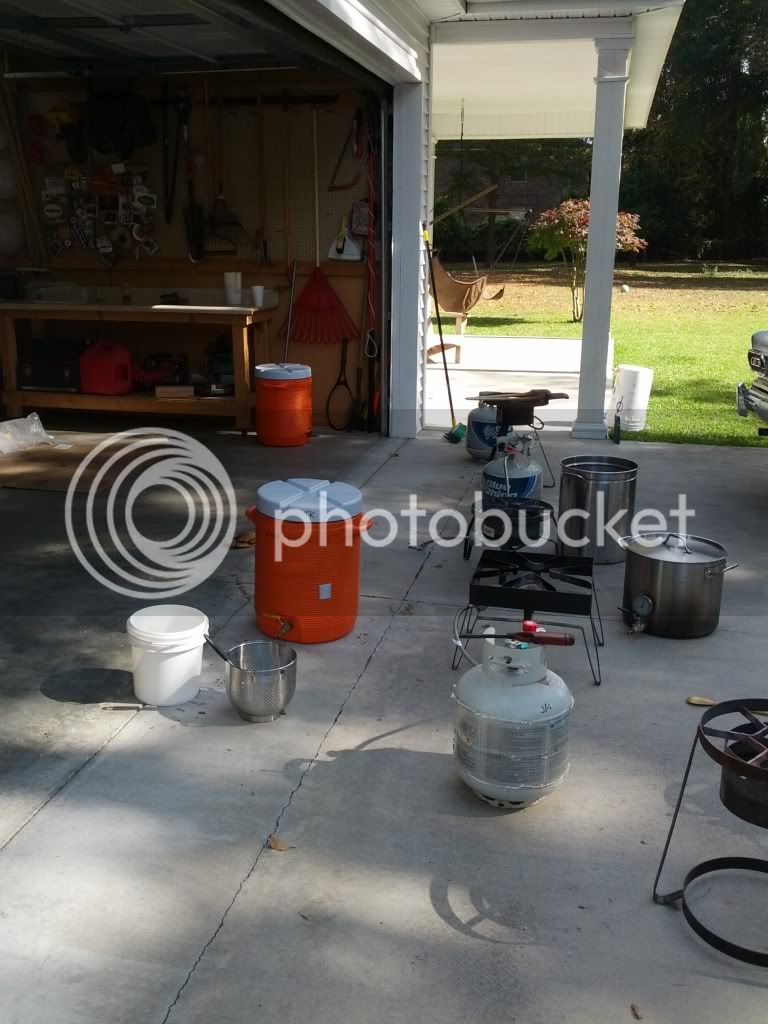
Doughing in, the first time I ever took my shirt off while brewing due to working so hard:
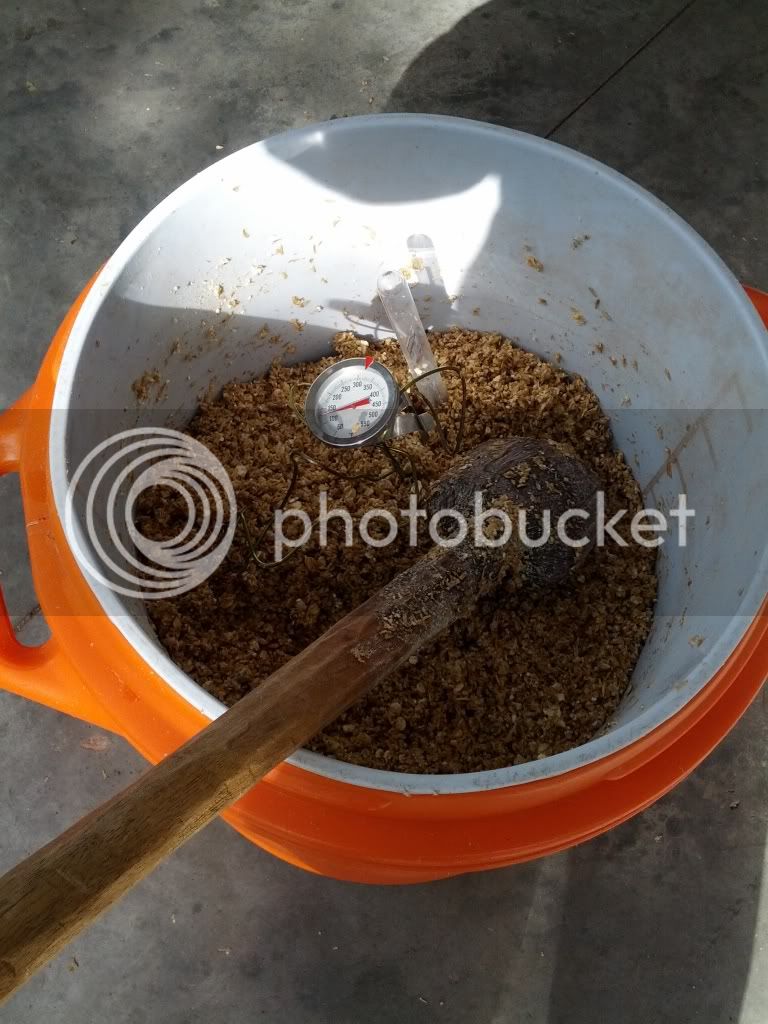
2nd water addition, still thick as hell:
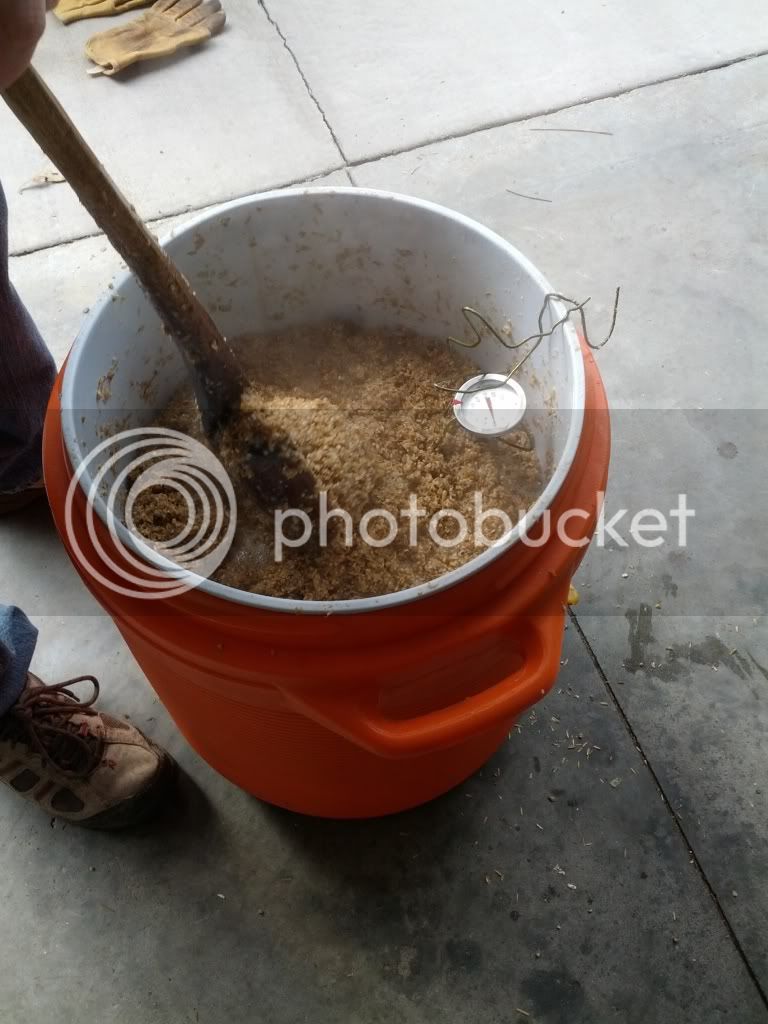
The key piece of equipment was a very deep (relative to its diameter) steel colander I purchased at IKEA on Friday. Pure luck to have come across it, and I can't imagine a better one for the job. Auto-syphoning also made this part of the process easier:
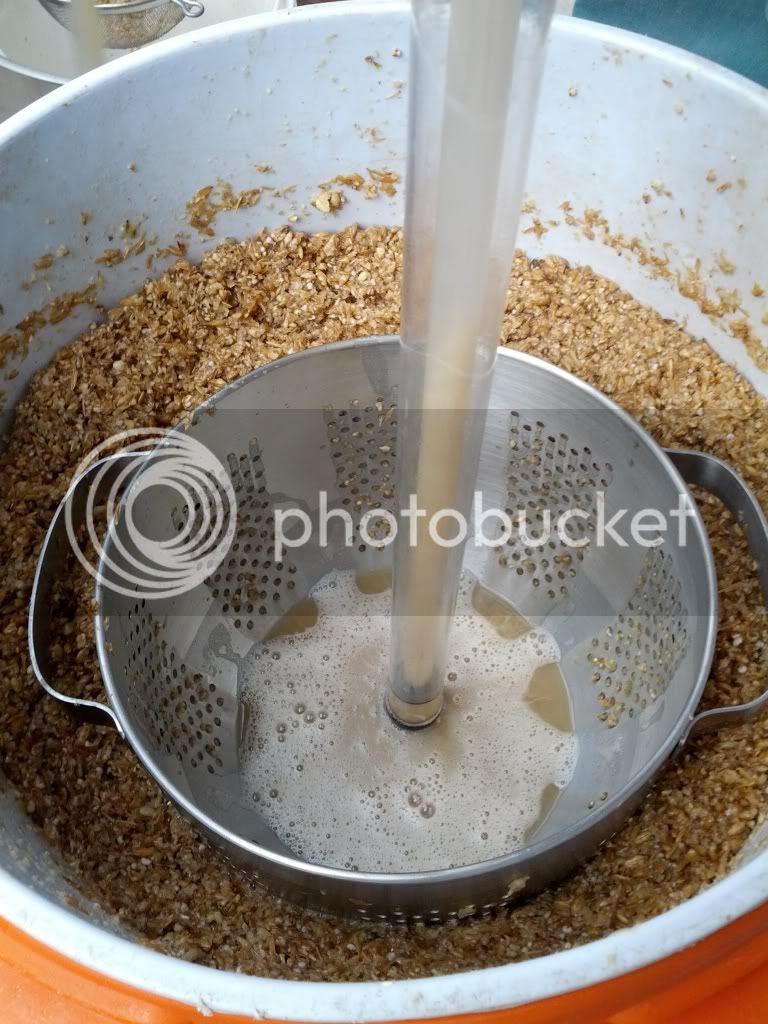
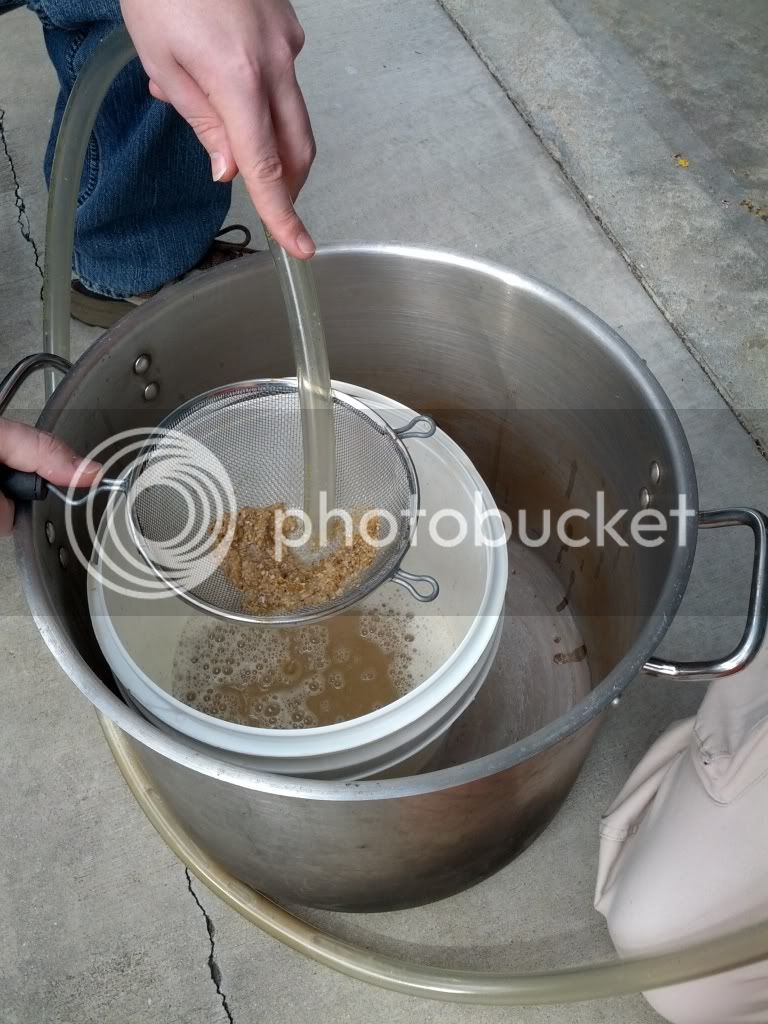
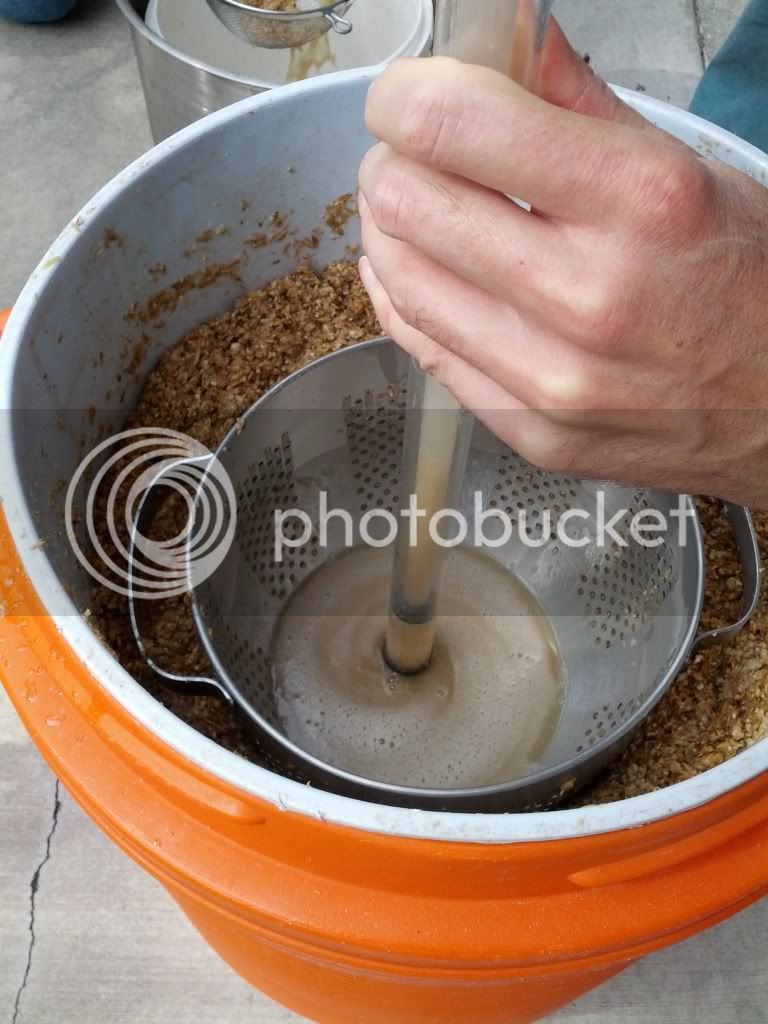
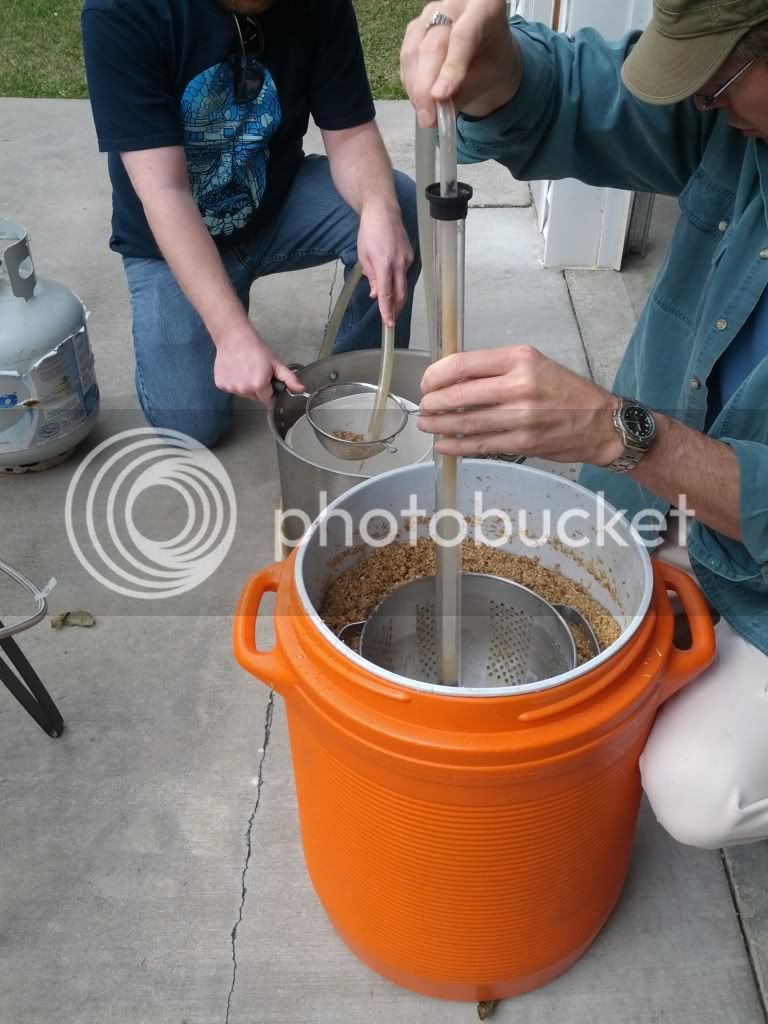
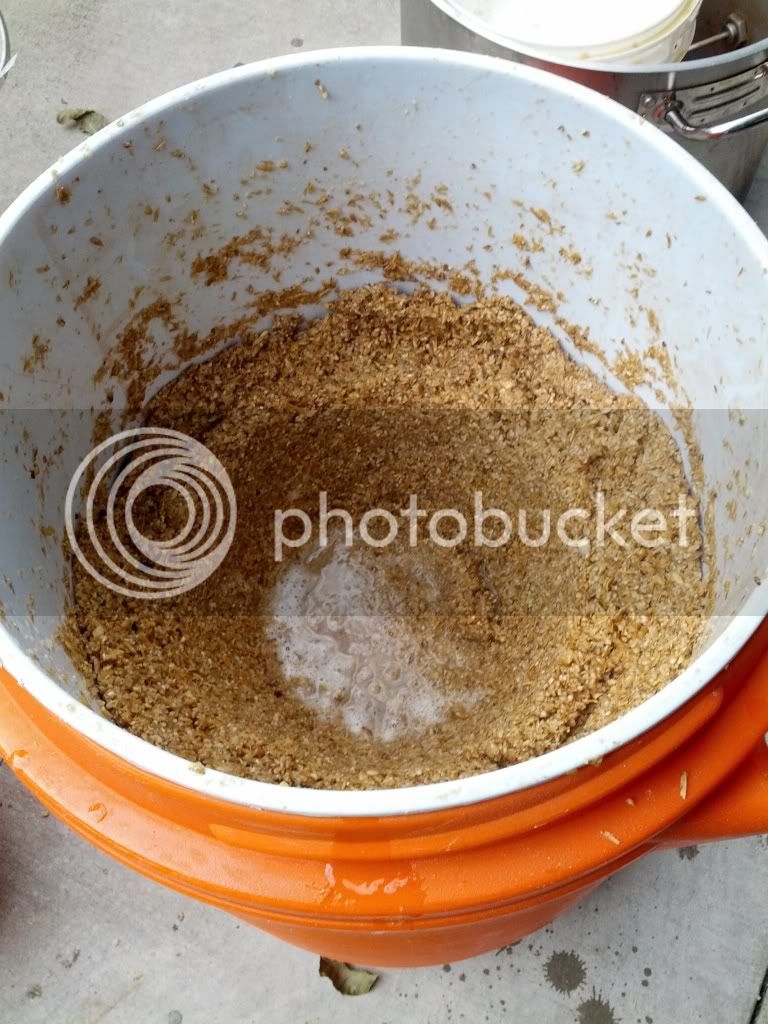
Now that's what I call cloudy wort:
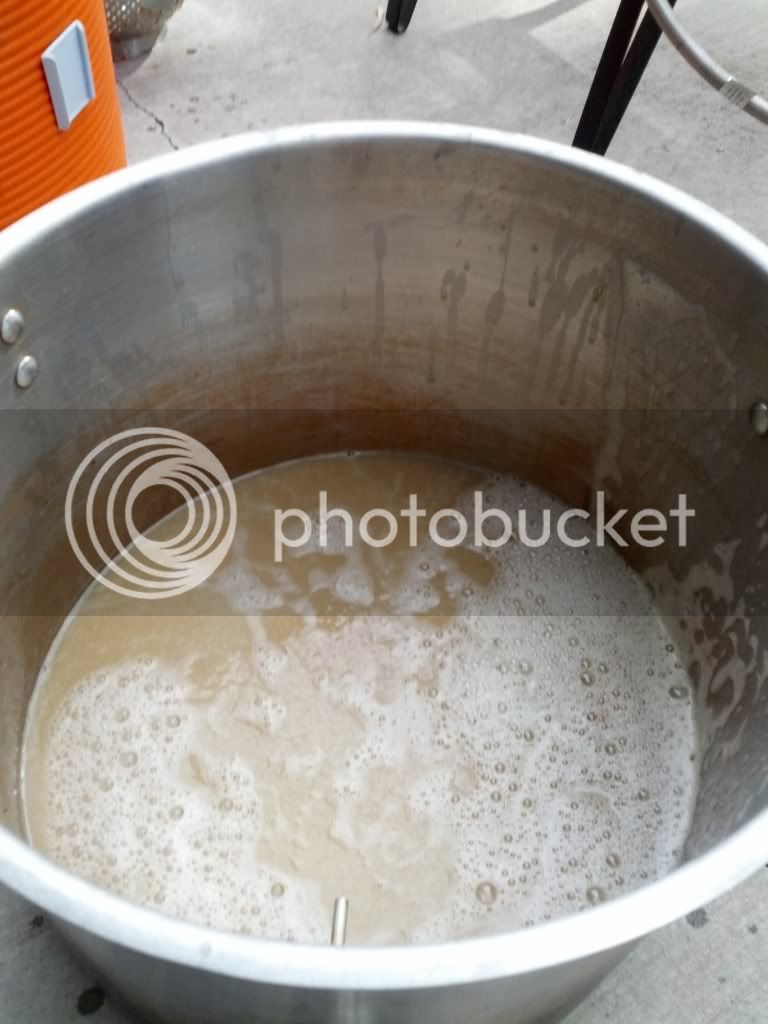
End of the boil, removing the hop bag:
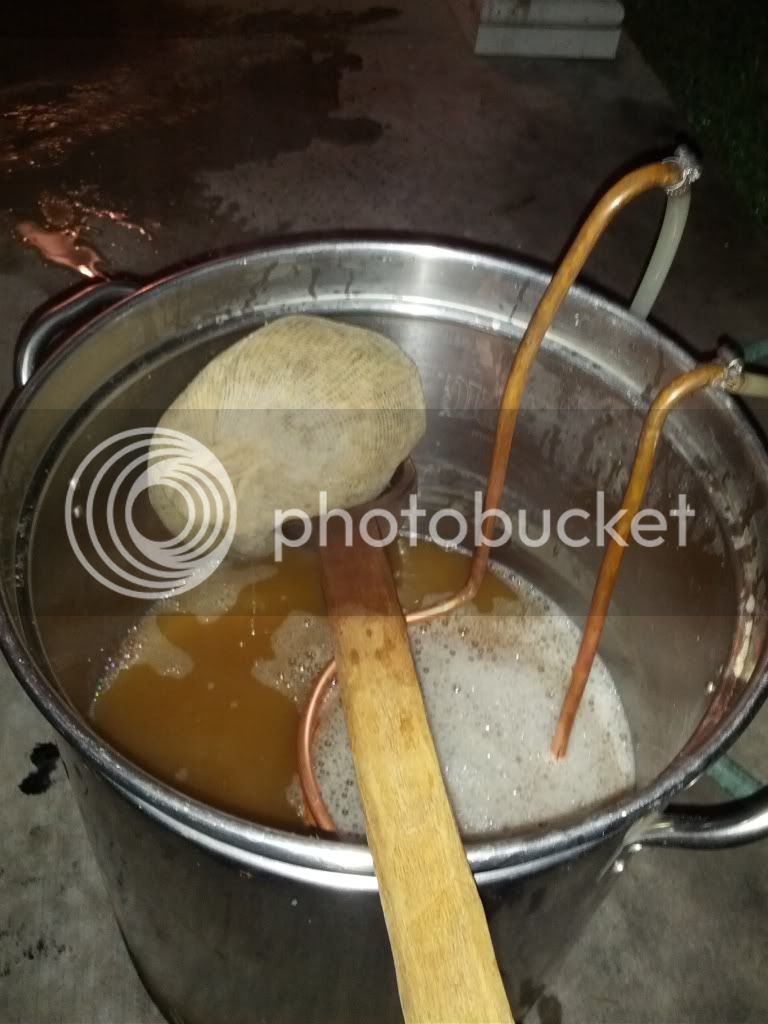
The finished product, sealed up. One of these will eventually become a kriek, while the other will be saved for blending with future batches (I plan to do this once a year) for a gueuze. And yes, I'm aware the date on the right-hand one is incorrect:
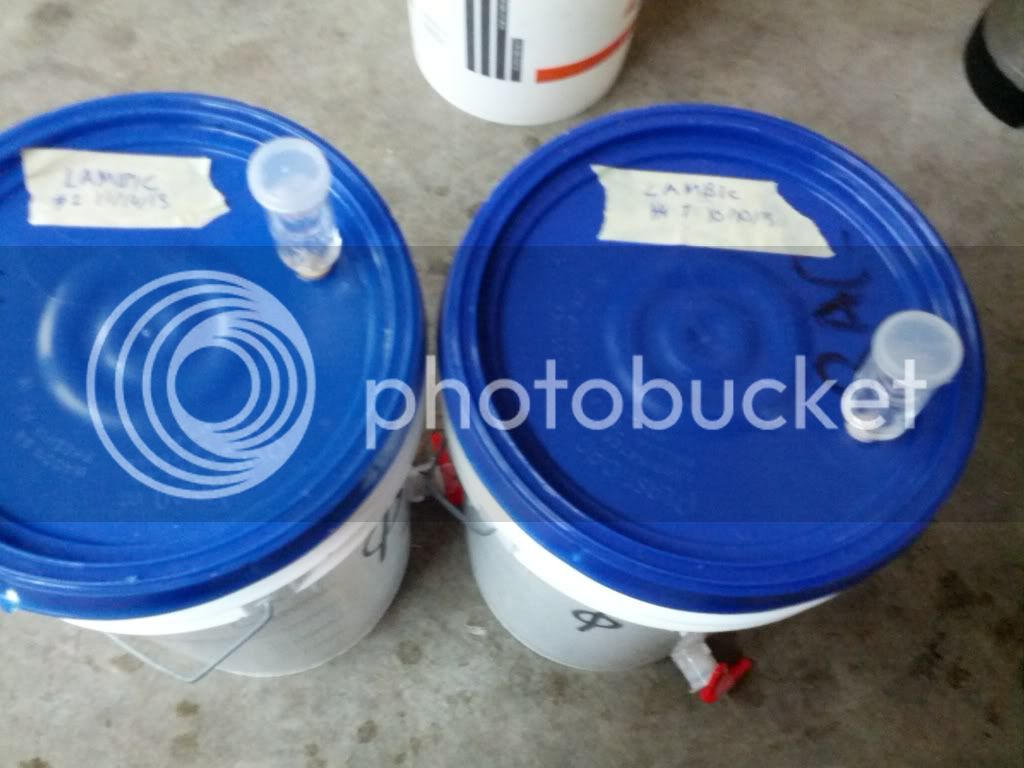
Celebrating being done, in style:
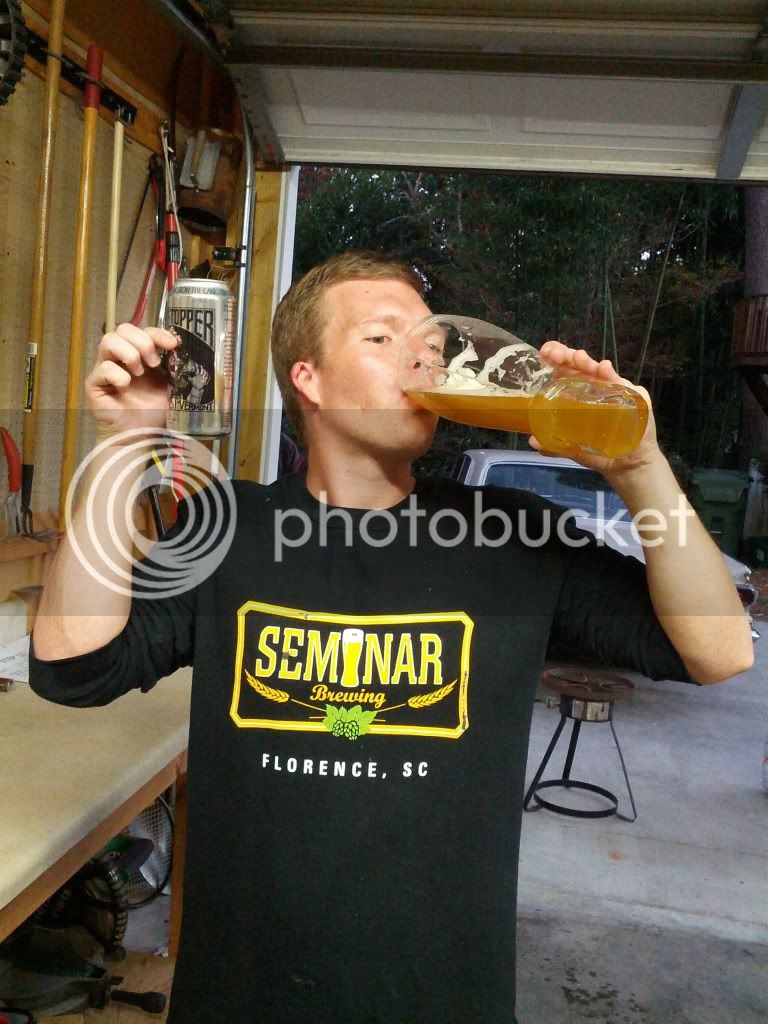
Thoughts:
-Overall I'm pleased with how things went, other than the massive temperature overshoot at Step 2. I'll need to adjust the temperatures next time to get closer on that one. There were some stuck sparges during the sparge process that had me swearing and kicking over empty buckets, but nothing catastrophic happened.
-This was a difficult, long, but rewarding and educating experience that ended up being a lot of fun. I'm hoping I can take the lessons learned and apply them to brewing other sour beers in the future.
-Rant: people who are not invited to brew days should not show up at them, and ESPECIALLY if they don't bring any beer themselves and snake pours from everybody else's bottles, while getting in the way and generally being nuisances. I did my best to keep this one unadvertised yet somehow moochers and still found out about it. Not letting that happen again. Thankfully we did a good job hiding the Brandy Hunahpu and Apple-Brandy Mexican Cake and only giving pours to the people who were invited and/or contributed.
-I encourage anyone interested in brewing sour beers to try this process at least once, for the experience if nothing else. Is it "worth" doing for the beer? We won't know for a long time, but as my friend John (an "intuitive" brewer if ever there was one, who abhors overly complicated approaches and technical precision) put it at the start of the boil, "that was a hell of a lot of work to get some sugar water".
Start time (setting up equipment, etc.): 9:30am
Real Start time (actual brewing process): 10:00am
Finishing time (sealed fermenters): 7:00pm
Ingredients (10 gallon batch):
15# Belgian pilsener
8# flaked wheat
1# rice hulls (to prevent stuck sparges - didn't prevent all of them but probably helped)
Hot Liquor Tank (HLT)
Mash Tun (MT)
Kettle 1 (K1)
Kettle 2 (K2)
Kettle 3 (K3)
Note: I don't have a pot big enough to boil down to a 10 gallon batch, so I split it between two of them; hence the use of 3 kettles here rather than just 2.
Step 1:
Heat 2.5gal H2O in HLT to 158F, dough in to MT with all the grains.
Target Temp: 113F
Actual Temp: 118F
Rest: 15 min
Step 2:
Add 2.25gal H20 @ 212F to MT.
Target Temp: 126F
Actual Temp: 150F (
Rest: 15 min
Step 3:
Remove 1.75gal from MT, heat in K1.
Target Temp: 190F
Actual Temp: 190F
Hold
Step 4:
Add 2.5gal H2O @ 160F to MT (recipe says 212F but that's under the assumption you hit 126 in Step 2).
Target Temp: 149F
Actual Temp: 150F
Rest: 45 min
Step 5:
Remove 2.5gal from MT, add to K1 and heat.
Target Temp: 190F
Actual Temp: 190F
Hold
Step 6:
Add 2.5gal H2O at 172F (recipe calls for 1.75gal at 212, I adjusted for more volume and a better temp target).
Target Temp: 162F
Actual Temp: 158F
Rest: 30 min
Step 7:
Run off 2.25gal from MT to K2, heat.
Target Temp: just below boiling
Step 8: Add liquid from K1 to MT as needed (used all of it).
Target Temp: 172F
Actual Temp: 168F
Rest: 20 min
Step 9:
-Add remaining liquid (none) from K1 to K2
-Vorlauf from MT to K1
-Sparge with H2O @ 190F (approx 7 gal)
Step 10:
-Add half the liquid in K2 to K3.
-During sparge, periodically transfer liquid from K1 to K2 and K3 in equal amounts, to ensure roughly consistent wort in both kettles.
Target volume: 7gal/kettle
Actual volume: 7gal/kettle
Step 11:
Heat K2 and K3 to boiling, add 4oz debittered aged leaf hops (0% AA) per kettle at the start of boil.
Boil Time: 2 hours
Step 12:
Cool K2 and K3 and add yeast.
Yeast mixture (split between two buckets, one for each kettle) consisted of:
-Wyeast 3278 Belgian Lambic Blend
-WLP655 Belgian Sour Mix 1
-Dregs from Riserva 2010, Zuur 2009, Dissident 2012
-Slurry of trub from an American Wild Ale (multiple generations, all using Wyeast 3763 Roeselare)
Photos:
Setting up equipment:

Doughing in, the first time I ever took my shirt off while brewing due to working so hard:

2nd water addition, still thick as hell:

The key piece of equipment was a very deep (relative to its diameter) steel colander I purchased at IKEA on Friday. Pure luck to have come across it, and I can't imagine a better one for the job. Auto-syphoning also made this part of the process easier:





Now that's what I call cloudy wort:

End of the boil, removing the hop bag:

The finished product, sealed up. One of these will eventually become a kriek, while the other will be saved for blending with future batches (I plan to do this once a year) for a gueuze. And yes, I'm aware the date on the right-hand one is incorrect:

Celebrating being done, in style:

Thoughts:
-Overall I'm pleased with how things went, other than the massive temperature overshoot at Step 2. I'll need to adjust the temperatures next time to get closer on that one. There were some stuck sparges during the sparge process that had me swearing and kicking over empty buckets, but nothing catastrophic happened.
-This was a difficult, long, but rewarding and educating experience that ended up being a lot of fun. I'm hoping I can take the lessons learned and apply them to brewing other sour beers in the future.
-Rant: people who are not invited to brew days should not show up at them, and ESPECIALLY if they don't bring any beer themselves and snake pours from everybody else's bottles, while getting in the way and generally being nuisances. I did my best to keep this one unadvertised yet somehow moochers and still found out about it. Not letting that happen again. Thankfully we did a good job hiding the Brandy Hunahpu and Apple-Brandy Mexican Cake and only giving pours to the people who were invited and/or contributed.
-I encourage anyone interested in brewing sour beers to try this process at least once, for the experience if nothing else. Is it "worth" doing for the beer? We won't know for a long time, but as my friend John (an "intuitive" brewer if ever there was one, who abhors overly complicated approaches and technical precision) put it at the start of the boil, "that was a hell of a lot of work to get some sugar water".



